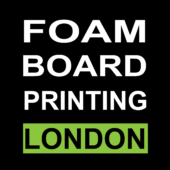How to Stick Foam Board Together: A Comprehensive Guide
Foam board, also known as foam core, is a versatile material used in various crafts, presentations, and DIY projects due to its lightweight and easy-to-handle nature. Whether you’re creating a school project display, mounting photographs, or constructing 3D models, knowing how to effectively stick foam board together is essential for achieving sturdy and professional results. This guide will cover different methods and tips to help you bond foam board effectively.
Choosing the Right Adhesive
Before starting your project, it’s crucial to select the appropriate adhesive based on the type of foam board and the application:
- Foam Board Adhesive: This type of adhesive is specially formulated to bond foam board without damaging the foam core. It typically comes in spray or liquid form and provides a strong, durable bond.
- Hot Glue Gun: Hot glue guns are effective for bonding foam board quickly. However, be cautious with the temperature, as excessive heat can melt the foam.
- Double-Sided Tape: Double-sided tape with a strong adhesive backing is suitable for lighter applications or temporary displays. Ensure it is designed for use on foam board to prevent damage.
- Craft Glue: Some craft glues are suitable for foam board, but check the label to ensure compatibility and a strong bond.
Preparation Steps
Before applying adhesive, prepare your foam board pieces for bonding:
- Clean Surfaces: Ensure the surfaces to be bonded are clean and free from dust or debris. This promotes better adhesion.
- Cutting: If you need precise edges or shapes, use a sharp utility knife or a foam board cutter to ensure clean cuts. This improves the bonding surface and overall aesthetic.
Methods to Stick Foam Board Together
1. Using Foam Board Adhesive:
- Shake the adhesive canister well and hold it approximately 6-8 inches away from the foam board surface.
- Spray a light, even coat of adhesive on both surfaces to be bonded.
- Allow the adhesive to tack up for a few seconds before pressing the surfaces together firmly.
- Apply pressure evenly across the bonded area to ensure a strong seal.
- Let it dry completely according to the manufacturer’s instructions before handling.
2. Hot Glue Gun:
- Heat the glue gun and insert a glue stick compatible with foam board.
- Apply a line or dots of glue along one of the edges or surfaces to be bonded.
- Quickly press the other piece of foam board onto the glue before it cools and hardens.
- Hold the pieces together firmly until the glue sets, usually within a minute.
3. Double-Sided Tape:
- Cut the double-sided tape to the desired length and apply it along the edges or corners of the foam board pieces.
- Remove the protective backing from the tape to expose the adhesive.
- Press the pieces firmly together, ensuring the tape adheres evenly across the surfaces.
4. Craft Glue:
- Apply craft glue evenly along the edges or surfaces of the foam board pieces to be bonded.
- Press the pieces together firmly and hold them in place until the glue begins to set.
- Use clips or heavy objects to apply continuous pressure as the glue dries completely.
Tips for Success
- Work in a Well-Ventilated Area: Some adhesives emit fumes, so ensure proper ventilation when working indoors.
- Test Adhesives: Before applying adhesive to your entire project, test it on a small, inconspicuous area of the foam board to ensure compatibility and desired results.
- Allow Sufficient Drying Time: Rushing the drying process can compromise the bond strength. Follow manufacturer recommendations for drying times.
Conclusion
Knowing how to stick foam board together effectively is essential for achieving professional-looking results in various projects. Whether you choose foam board adhesive, a hot glue gun, double-sided tape, or craft glue, each method offers distinct advantages depending on your specific needs. By selecting the right adhesive and following proper preparation and application techniques, you can ensure durable and visually appealing bonds that enhance your crafts, displays, and presentations. Mastering these techniques empowers you to unleash your creativity while maintaining structural integrity and longevity in your foam board creations.
